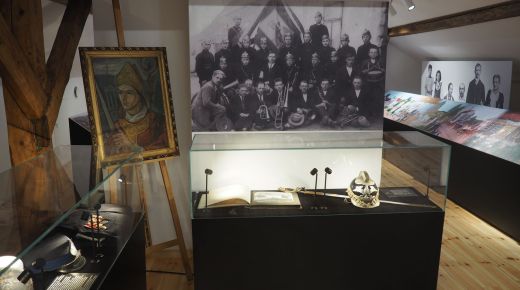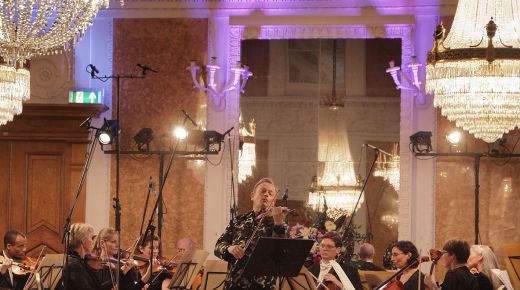Rzeszów Cellars is the route of the underground corridors is 369 m long. It includes 25 cellars and 15 corridors that at some points reach 10 m deep into the ground. Visitors can see traces of history and remains of medieval walls
Rzeszów Cellars
Rynek 26
35-064 Rzeszów
phone: 17 748 39 90
email: rzeszowskiepiwnice@rzeszowskiepiwnice.pl
In the multimedia environment created there you can learn about the history of the city of Rzeszów by watching a film in 5D technology, play thematic quizzes and arcade games, and be transported into the world of Rzeszów legends and historical events significant for the city. You will also have a chance to see the blueprints for the construction of the Central Industrial Region and learn about the post-war industry of Rzeszów, as well as the cultural and sports achievements of people linked with the city.
The Rzeszów Cellars can be visited either in a traditional or interactive way. The first option, called “History in Pictures”, is a tour recommended for people who prefer stories about the history of Rzeszów and its underground told by a guide. Those who decide to go for the second option, called “Interactive Legend”, will be able to have a tour of the cellars. A team of six can also take an active challenge related to the history and culture of the city to discover the treasures of Rzeszów.
If you want to experience a great adventure and learn about the history of Rzeszów through play, the RZESZÓW CELLARS is a must-visit place.
Places worth seeing in Rzeszów:
summer palace of the Lubomirski family
Franciszek Kotula Ethnographic Museum (6, Rynek)
City of Rzeszów Historic Museum (12, Rynek)
Museum of Bedtime Cartoons, displaying collection acquired by Wojciech Jama
Museum of the Technology and the Military
Wanda Siemaszkowa Theatre, former building of Sokół Gymnastic Society
-
Szajna Gallery
-
building of Regional Public Library from 1890, formerly home to the district council
-
Bishops palace at Jałowego Street
-
building of Colonel Leopold Lis-Kula Secondary School
-
Cichociemnych Square with Józef Szajna’s sculpture entitled Passage 2001
-
Kazimierz Górski square
-
City of Rzeszów Gallery of Photography
-
New Town Synagogue (rebuilt as BWA Art Gallery)
-
Old Town Synagogue (rebuilt as National Archives)
-
Chapel of the Holy Trinity
-
Old Cemetery with gravestones from the late 1700s.
-
January Uprising statue built in 1886
-
statue of Adam Mickiewicz
-
statue of Tadeusz Kościuszko
-
statue of Juliusz Słowacki
-
statue of General Władysław Sikorski
-
statue of knight Jan Pakosławic
-
statue of Tadeusz Nalepa (3 Maja st.)
-
statue of Colonel Leopold Lis-Kula at Farny square
-
statue of the Cursed Soldiers
-
statue of Stanisław Nitka by the Wisłok River
-
statue of the Victims of Terror
-
figure of St. John of Nepomuk
-
memorial plaque in honour of Marcin Lelewel Borelowski
-
sculpture of a boy shooting from a sling (Słowackiego Street)
-
statue of the blessed John of Dukla
-
statue of Our Lady Queen of Poland
-
statue of Father Stanisław Konarski
-
building of PKO bank from 1906-1908, 3 Maja Street
-
Art-Nouveau villa from 1903 at Pod Kasztanami avenue
-
Art-Nouveau villa from 1899 at Pod Kasztanami avenue
-
“Pod sową” villa from 1900 at Pod Kasztanami avenue
-
palace of Jędrzejowicz family, currently hospital
-
palace of Jędrzejowicz family in Załęże from the late 18th/early 19th century
-
town hall
-
brick houses from the 1800s
-
Esterka’s house at 15, Rynek
-
old well at the town square
-
Diocesan Museum
-
Museum of Hunting
- Artur Malawski Philharmonic Hall
-
Podkarpackie Reginal Office building
-
round foot bridge
-
Bernardine Gardens
-
Statue of the Revolutionary Act
-
Rzeszów city map from 1762 on a house at 2, Sokoła Street
-
wall painting representing a scene from Deballage, Józef Szajna’s theatre performance, at 3, Sokoła Street
-
Expedycja rope park
-
skatepark
-
Zamkowy bridge
-
Gabriel Narutowicz bridge
-
former WSK Culture Centre, currently home to Rzeszów University Faculty of Music
-
manor house from the late 1800s at Dąbrowskiego Street
-
Lisia Góra nature reserve
Photo: Grzegorz Bukała / Urząd Miasta Rzeszowa / Krystian Kłysewicz



